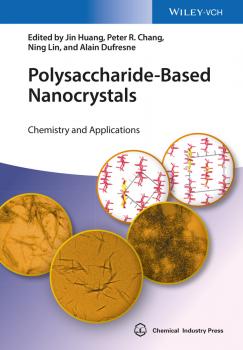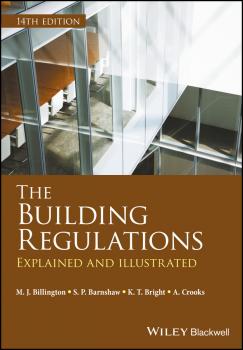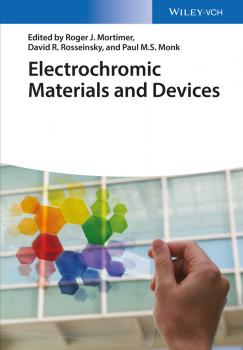Техническая литература
Различные книги в жанре Техническая литератураEnergy Storage in Electric Power Grids
This book deals with the management and valuation of energy storage in electric power grids, highlighting the interest of storage systems in grid applications and developing management methodologies based on artificial intelligence tools. The authors highlight the importance of storing electrical energy, in the context of sustainable development, in «smart grids», and discuss multiple services that storing electrical energy can bring. Methodological tools are provided to build an energy management system storage following a generic approach. These tools are based on causal formalisms, artificial intelligence and explicit optimization techniques and are presented throughout the book in connection with concrete case studies.
Flavour. From Food to Perception
This book will cover all aspects of flavour perception, including aroma, taste and the role of the trigeminal nerve, from the general composition of food to the perception at the peri-receptor and central level. This book will answer to a growing need for multidisciplinary approaches to better understand the mechanisms involved in flavour perception. The book presents the bases of anatomy of sensory perception. It will provide the requisite basic knowledge on the molecules responsible for flavour perception, on their release from the food matrix during the eating process in order to reach the chemosensory receptors, and on their retention and release from and transformation by bodily fluids of the oral and nasal cavities. It will also bring current knowledge on the multimodal interactions. This book will also cover the recent evolution in flavour science: characterisation of molecules, interaction with food matrix and more recently, physic-chemical and physiological and events during oral processing increasingly considered.
Photovoltaic Solar Energy. From Fundamentals to Applications
Solar PV is now the third most important renewable energy source, after hydro and wind power, in terms of global installed capacity. Bringing together the expertise of international PV specialists Photovoltaic Solar Energy: From Fundamentals to Applications provides a comprehensive and up-to-date account of existing PV technologies in conjunction with an assessment of technological developments. Key features: Written by leading specialists active in concurrent developments in material sciences, solar cell research and application-driven R&D. Provides a basic knowledge base in light, photons and solar irradiance and basic functional principles of PV. Covers characterization techniques, economics and applications of PV such as silicon, thin-film and hybrid solar cells. Presents a compendium of PV technologies including: crystalline silicon technologies; chalcogenide thin film solar cells; thin-film silicon based PV technologies; organic PV and III-Vs; PV concentrator technologies; space technologies and economics, life-cycle and user aspects of PV technologies. Each chapter presents basic principles and formulas as well as major technological developments in a contemporary context with a look at future developments in this rapidly changing field of science and engineering. Ideal for industrial engineers and scientists beginning careers in PV as well as graduate students undertaking PV research and high-level undergraduate students.
Networking Simulation for Intelligent Transportation Systems. High Mobile Wireless Nodes
This book studies the simulation of wireless networking in the domain of Intelligent Transportation Systems (ITS) involving aircraft, railway and vehicular communication. On this subject, particular focus is placed on effective communication channels, mobility modeling, multi-technology simulation and global ITS simulation frameworks. Networking Simulation for Intelligent Transportation Systems addresses the mixing of IEEE802.11p and LTE into a dedicated simulation environment as well as the links between ITS and IoT; aeronautical mobility and VHD Data Link (VDL) simulation; virtual co-simulation for railway communication and control-command; realistic channel simulation, mobility modeling and autonomic simulation for VANET and quality metrics for VANET. The authors intend for this book to be as useful as possible to the reader as they provide examples of methods and tools for running realistic and reliable simulations in the domain of communications for ITS.
Polysaccharide-Based Nanocrystals. Chemistry and Applications
Polysaccharide nanocrystals, an emerging green nanoingredient (nanomaterial) with high crystallinity obtained by acid hydrolysis of biomass-based polysaccharides, are of scientific and economic significance owing to their abundance, biodegradation potential, and fascinating functional performance. This versatile class of materials can be used in nanocomposites such as rubber or polyester, and in functional materials such as drug carriers, bio-inspired mechanically adaptive materials or membranes, to name but a few. This book encompasses the extraction, structure, properties, surface modification, theory, and mechanism of diverse functional systems derived from polysaccharide nanocrystals. This highly sought-after trendy book is currently the only monograph devoted to the most current knowledge pertaining to this exciting subject area. It is ideal for researchers and stakeholders who wish to broaden and deepen their knowledge in the fast-moving and rapidly expanding R&D field of polymeric materials.
The Building Regulations. Explained and Illustrated
Since publication of the first edition in 1976, The Building Regulations: Explained and Illustrated has provided a detailed, authoritative, highly illustrated and accessible guide to the regulations that must be adhered to when constructing, altering or extending a building in England and Wales. This latest edition has been fully revised throughout. Much of the content has been completely rewritten to cover the substantial changes to the Regulations since publication of the 13th edition, to ensure it continues to provide the detailed guidance needed by all those concerned with building work, including architects, building control officers, Approved Inspectors, Competent Persons, building surveyors, engineers, contractors and students in the relevant disciplines.
Advanced Engineering Materials and Modeling
The engineering of materials with advanced features is driving the research towards the design of innovative materials with high performances. New materials often deliver the best solution for structural applications, precisely contributing towards the finest combination of mechanical properties and low weight. The mimicking of nature's principles lead to a new class of structural materials including biomimetic composites, natural hierarchical materials and smart materials. Meanwhile, computational modeling approaches are the valuable tools complementary to experimental techniques and provide significant information at the microscopic level and explain the properties of materials and their very existence. The modeling also provides useful insights to possible strategies to design and fabricate materials with novel and improved properties. The book brings together these two fascinating areas and offers a comprehensive view of cutting-edge research on materials interfaces and technologies the engineering materials. The topics covered in this book are divided into 2 parts: Engineering of Materials, Characterizations & Applications and Computational Modeling of Materials. The chapters include the following: Mechanical and resistance behavior of structural glass beams Nanocrystalline metal carbides – microstructure characterization SMA-reinforced laminated glass panel Sustainable sugarcane bagasse cellulose for papermaking Electrospun scaffolds for cardiac tissue engineering Bio-inspired composites Density functional theory for studying extended systems First principles based approaches for modeling materials Computer aided materials design Computational materials for stochastic electromagnets Computational methods for thermal analysis of heterogeneous materials Modelling of resistive bilayer structures Modeling tunneling of superluminal photons through Brain Microtubules Computer aided surgical workflow modeling Displaced multiwavelets and splitting algorithms
Hydrostructural Pedology
This book presents an in-depth guide to the subject matter and main points of hydrostructural pedology, as theorized for the first time. The authors focus on the underlying concepts, the purpose and role this field plays within agroenvironmental sciences. It is divided into two parts. Part 1 presents the theory behind hydrostructural pedology. The systemic approach applied to the soil is presented, showing how this leads to the thermodynamic formulation of water in the soil’s organized medium and to the systemic modeling of soil–water-coupling in natural or anthropic organizations. Part 2 presents the methodology to complement the first part. In it, the authors determine the hydrostructural characteristics of the pedostructure, characteristic parameters of equilibrium state equations and the hydrostructural functioning of the soil.
Tunnel Field-effect Transistors (TFET). Modelling and Simulation
Research into Tunneling Field Effect Transistors (TFETs) has developed significantly in recent times, indicating their significance in low power integrated circuits. This book describes the qualitative and quantitative fundamental concepts of TFET functioning, the essential components of the problem of modelling the TFET, and outlines the most commonly used mathematical approaches for the same in a lucid language. Divided into eight chapters, the topics covered include: Quantum Mechanics, Basics of Tunneling, The Tunnel FET, Drain current modelling of Tunnel FET: The task and its challenges, Modeling the Surface Potential in TFETs, Modelling the Drain Current, and Device simulation using Technology Computer Aided Design (TCAD). The information is well organized, describing different phenomena in the TFETs using simple and logical explanations. Key features: * Enables readers to understand the basic concepts of TFET functioning and modelling in order to read, understand, and critically analyse current research on the topic with ease. * Includes state-of-the-art work on TFETs, attempting to cover all the recent research articles published on the subject. * Discusses the basic physics behind tunneling, as well as the device physics of the TFETs. * Provides detailed discussion on device simulations along with device physics so as to enable researchers to carry forward their study on TFETs. Primarily targeted at new and practicing researchers and post graduate students, the book would particularly be useful for researchers who are working in the area of compact and analytical modelling of semiconductor devices.
Electrochromic Materials and Devices
Electrochromic materials can change their properties under the influence of an electrical voltage or current. Different classes of materials show this behavior such as transition metal oxides, conjugated polymers, metal-coordinated complexes and organic molecules. As the color change is persistent, the electric field needs only to be applied to initiate the switching, allowing for applications such as low-energy consumption displays, light-adapting mirrors in the automobile industry and smart windows for which the amount of transmitted light and heat can be controlled. The first part of this book describes the different classes and processing techniques of electrochromic materials. The second part highlights nanostructured electrochromic materials and device fabrication, and the third part focuses on the applications such as smart windows, adaptive camouflage, biomimicry, wearable displays and fashion. The last part rounds off the book by device case studies and environmental impact issues.









